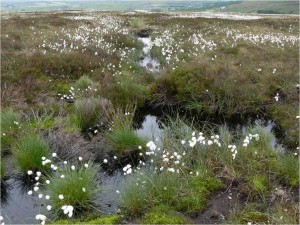 Local people involved in the West Pennine Moors lingering non-notification case have received various documents from Natural England under Freedom of Information requests. This blog uses information from the heavily redacted note to the NE Leadership Group Strategy meeting of 23 March 2015 (meeting no NELG/S/07) entitled Designations Programme: Process to establish Gate Zero (whatever that means – it’s complete gobbledygook isn’t it?).
Local people involved in the West Pennine Moors lingering non-notification case have received various documents from Natural England under Freedom of Information requests. This blog uses information from the heavily redacted note to the NE Leadership Group Strategy meeting of 23 March 2015 (meeting no NELG/S/07) entitled Designations Programme: Process to establish Gate Zero (whatever that means – it’s complete gobbledygook isn’t it?).
Even the purpose of the paper is redacted! What could the purpose have been that we cannot even be told? Answers on a postcard please… Not, surely, to spin out the process a little bit longer?
Then pages 1-11 are completely blanked out.
Then we have pages 12-15 , Annex E, which are about the West Pennine Moors proposal for SSSI notification.
Some interesting facts:
- The original ‘conspectus’ (I’m not sure what that is) was received in 2007 and NE has been ‘working’ on this case since 2012.
- NE has already invested nearly six person-years’ work into this proposal – without coming up with a decision.
- Evidence gathering costing £80,000 has been carried out – without coming up with a decision.
- All known owners/occupiers, stakeholders and interested parties have been contacted (over 200 of them).
- The site is considered to be under serious threat.
- Windfarm proposals have been made and more are expected. Unfavourable changes in agriculture are possible too.
- Notification is supported by NE upland, grassland, woodland, vascular plants and birds specialists (and opposed by none).
- There is a danger that the data collected will become out of date if a decision is not made soon.
- The notification is supported by the RSPB, Lancs Wildlife Trust, National Trust and Woodland Trust.
- Much of the site is in unfavourable condition.
So, it’s a threatened site that qualifies under the criteria, over which NE has been dithering for too long. What’s the problem? Maybe the problem is in the redacted pages 1-11 (and 16-18) of this note, or maybe it is in the heads of the NE senior staff.
It is very interesting to read that the Secretary of State, Liz Truss, wrote to an interested party in December 2014 saying that a notification decision would be made in ‘the early New Year’. NE senior staff, maybe very very senior staff, seem to have let the Secretary of State down badly here since it is late June (which even in Defra is not the ‘early New Year’) and no decision has yet been made. So what’s happening? Ms Truss wouldn’t have plucked the date ‘early New Year’ out of the air on her own – someone told her that was the date. So what spanner has been stuck in which works by which person?
Is NE fit for purpose?
PS I’ve added West Pennine Moors as a ‘category’ on this blog so that it is easy to search for – I have a feeling we may return to this subject quite often.
[registration_form]
I am a fool to myself but I keep repeating the same mistake and think that NE are on “our side”. Must break this habit 🙁
Someone needs to challenge the redactions with the Information Commissioner, Mark.
Maybe the delays in designation from the Government Agency – English Nature – have something to do with seeing the West Pennine Moors as a ‘weak point’ for fracking exploration around Healey Nab, Rivington, Smithills and Bolton West. Let us consider the situation – we have 2 seperate local authorities – Bolton and Chorley, a newly elected Conservative MP Chris Green in Bolton West, numerous parties concerned with environmental protection such as The Woodland Trust (Smithills), Lancs Wildlife Trust and RSPB who have no over-arching power-arm, and finally continued austerity and local landowners who are willing to take political sweetners in order to release their land, not for AONB/SSSI protection, but for shale gas exploration. Something quick and urgent needs to be done before this precious landscape is destroyed. The West Pennine Moors are just stunning and provide heavy populated towns with green ‘lungs’, a place to go for numerous leisure and recreational pursuits such as cycling and walking, and a rich tapestry of plant communities and huge water catchment area. Protection for natural ‘water catchment’ will be of vital significance in the future with climate change.